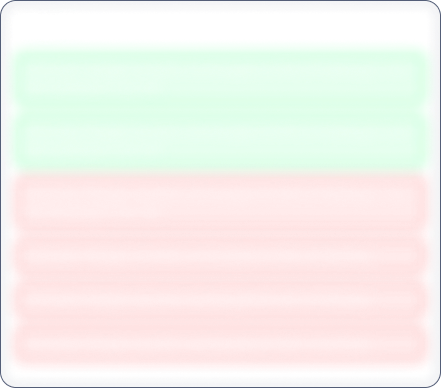Month End Sale 60% off
Jyoti Global Plast

No Data Available
Investor Sentiment
Jyoti Global Plast Share price and Fundamental Analysis
Key Metrics
Stock Returns
Stock Heatmap

No Stocks
Smart Score

Unlock Smart Score
See Detailed Analysis & Insights


Unlock Insights
See Detailed Analysis & Insights
Technicals
Returns Calculator
If you would have investedResearch Report
No Research Report
Corporate Action

No Data Available
Financials
Key Ratios
ROE
Avg ROE (3 Yrs) : NaN%
ROCE
Avg ROCE (3 Yrs) : NaN%
ROA
Avg ROA (3 Yrs) : NaN%
NPM
Avg NPM (3 Yrs) : NaN%
Dividend History
5 Year FactSheet
Documents

No Data Available
News
Jyoti Global Plast Management and History
Company Management


Unlock Management Data
See Detailed Analysis & Insights
Company History
One of the promoters, Bhawanji Shah, started the business of manufacturing plastic containers in the year 1990 as a partnership firm, 'Jyoti Industries', in Mumbra, Mumbai. In 2004, 'Jyoti Polycontainers Private Limited' was incorporated for manufacturing blow-moulded plastic containers. It was operating from Rabale, Navi Mumbai. Keeping up with the growing demand, the Company expanded its operations by adding more machines, products and clientele to its arsenal over the years.
In 2022, Jyoti Polycontainers Private Limited was renamed to 'Jyoti Global Plast Private Limited' to better reflect its vision of operating and diversifying into different sectors. In January 2025, Company's status was converted into a public limited company as 'Jyoti Global Plast Limited'.
The Company started commercial production, by setting up a Unit I Factory in Rabale, Navi Mumbai, Maharashtra for production of polymer based plastic containers in year 2005. Their current combined production capacity is 7,416 MT p.a. In 2016, it established 210 Litre (Modified) Automatic Blow Moulding Machine for Production of blow moulded large plastic products.
The Company is engaged in the business of plastic moulding, providing custom solutions based on client-specific requirements for polymer-based packaging containers (HDPE-PP grade products such as drums, carboys, jerrycans, barrels, pail buckets etc.), and toys for use in industries such as pharmaceutical, chemical, food & beverage, lube and industrial oil, adhesives, childcare, etc. Presently, Company run operations from 2 plants located in Rabale, Navi Mumbai. Operating from the facilities in Navi Mumbai, generally cater to various industries such as paint, lubricant, chemical, adhesives, food, oil, toy components, etc. Apart from this, the Company provide HDPE packaging solutions for various industries, producing drums, jerrycans, barrels, and bottles. Their packaging solutions cover capacities from 250ml to 250 litres, supporting small-scale and bulk storage and transportation requirements.
The Company owe a fleet of 6 company-owned trucks to maintain control over delivery schedules, optimize routes, have shorter lead time requirement and ensure on-time delivery of products to customers. Further, recognizing that certain situations, such as high-demand periods, larger shipments, or deliveries at distant locations, it also collaborate with a network of trusted third-party logistics providers.
Company is planning an IPO aggregating an issuance of 59,75,000 equity shares of Rs 10 each comprising a fresh issue of 48,00,000 equity shares and 11,75,000 equity shares through offer for sale.
Jyoti Global Plast Share Price
Jyoti Global Plast share price reflects investor sentiment toward the company and is impacted by various factors such as financial performance, market trends, and economic conditions. Share price is an indicator which shows the current value of the company's shares at which buyers or sellers can transact.
Jyoti Global Plast Market Cap
Market capitalization of Jyoti Global Plast indicates the total value of its outstanding shares. Marketcap is calculated by multiplying share price and outstanding shares of the company. It is a helpful metric for assessing the company's size and market Valuation. It also helps investors understand how Jyoti Global Plast is valued compared to its competitors.
Jyoti Global Plast PE Ratio
Jyoti Global Plast PE ratio helps investors understand what is the market value of each stock compared to Jyoti Global Plast 's earnings. A PE ratio higher than the average industry PE could indicate an overvaluation of the stock, whereas a lower PE compared to the average industry PE could indicate an undervaluation.
Jyoti Global Plast PEG Ratio
The PEG ratio of Jyoti Global Plast evaluates its PE ratio in relation to its growth rate. A PEG ratio of 1 indicates a fair value, a PEG ratio of less than 1 indicates undervaluation, and a PEG ratio of more than 1 indicates overvaluation.
Jyoti Global Plast ROE (Return on Equity)
Return on Equity (ROE) measures how effectively Jyoti Global Plast generates profit from shareholders' equity. A higher ROE of more than 20% indicates better financial performance in terms of profitability.
Jyoti Global Plast ROCE (Return on Capital Employed)
Return on Capital Employed (ROCE) evaluates the profitability of Jyoti Global Plast in relation to its capital employed. In simple terms, ROCE provides insight to investors as to how well the company is utilizing the capital deployed. A high ROCE of more than 20% shows that the business is making profitable use of its capital.
Jyoti Global Plast Total Debt
Total debt of Jyoti Global Plast shows how much the company owes to either banks or individual creditors. In simple terms, this is the amount the company has to repay. Total debt can be a very useful metric to show the financial health of the company. Total debt more than equity is considered to be a bad sign.
Jyoti Global Plast Debt to Equity Ratio
The Debt-to-Equity (DE) ratio of Jyoti Global Plast compares its total debt to shareholders' equity. A higher Debt to Equity ratio could indicate higher financial risk, while a lower ratio suggests that the company is managing its debt efficiently.
Jyoti Global Plast CAGR (Compound Annual Growth Rate)
CAGR shows the consistent growth rate of Jyoti Global Plast over a specific period, whether it is over a month, a year, or 10 years. It is a key metric to evaluate the company’s long-term growth potential. Main metrics for which CAGR is calculated are net sales, net profit, operating profit, and stock returns.
Jyoti Global Plast Technical Analysis
Technical analysis of Jyoti Global Plast helps investors get an insight into when they can enter or exit the stock. Key components of Jyoti Global Plast Technical Analysis include:
Support Levels (S1, S2, S3)
There are usually multiple support levels, but the main support levels for a stock are S1, S2, S3. Support levels indicate price points where stock might get support from buyers, helping the stock stop falling and rise.
Resistance Levels (R1, R2, R3)
There are usually multiple resistance levels, but the main resistance levels for a stock are R1, R2, R3. Resistance levels represent price points where Jyoti Global Plast shares often struggle to rise above due to selling pressure.
Jyoti Global Plast Dividends
Dividends refer to the portion of the company’s profits distributed to its shareholders. Dividends are typically paid out in cash and reflect Jyoti Global Plast ’s financial health and profitability.
Jyoti Global Plast Bonus Shares
Bonus shares are usually given by companies to make the stock more affordable, increase liquidity, boost investor confidence, and more.
Jyoti Global Plast Stock Split
Stock split increases the number of its outstanding shares by dividing each existing share into multiple shares. When the company offers a stock split, the face value of the stock reduces in the same proportion as the split ratio.
Jyoti Global Plast Financials
The financials of Jyoti Global Plast provide a complete view to investors about its net sales, net profit, operating profits, expenses, and overall financial health. Investors can analyze financial data to assess the company’s stability and also understand how the company has been growing financially.
Jyoti Global Plast Profit and Loss Statements
The profit and loss statement of Jyoti Global Plast highlights its net sales, net profit, total expenditure, and operating profits in the current financial year. This Profit and Loss statement is crucial for evaluating the profitability and financial stability of Jyoti Global Plast .
Jyoti Global Plast Balance Sheet
The balance sheet presents a snapshot of Jyoti Global Plast ’s assets, liabilities, and equity of shareholders, providing insights into the financials of the company.
Jyoti Global Plast Cashflow Statements
Cashflow statements track the company's cash inflows and outflows over a period. It is an essential tool for understanding how well the company manages its liquidity and finances.


